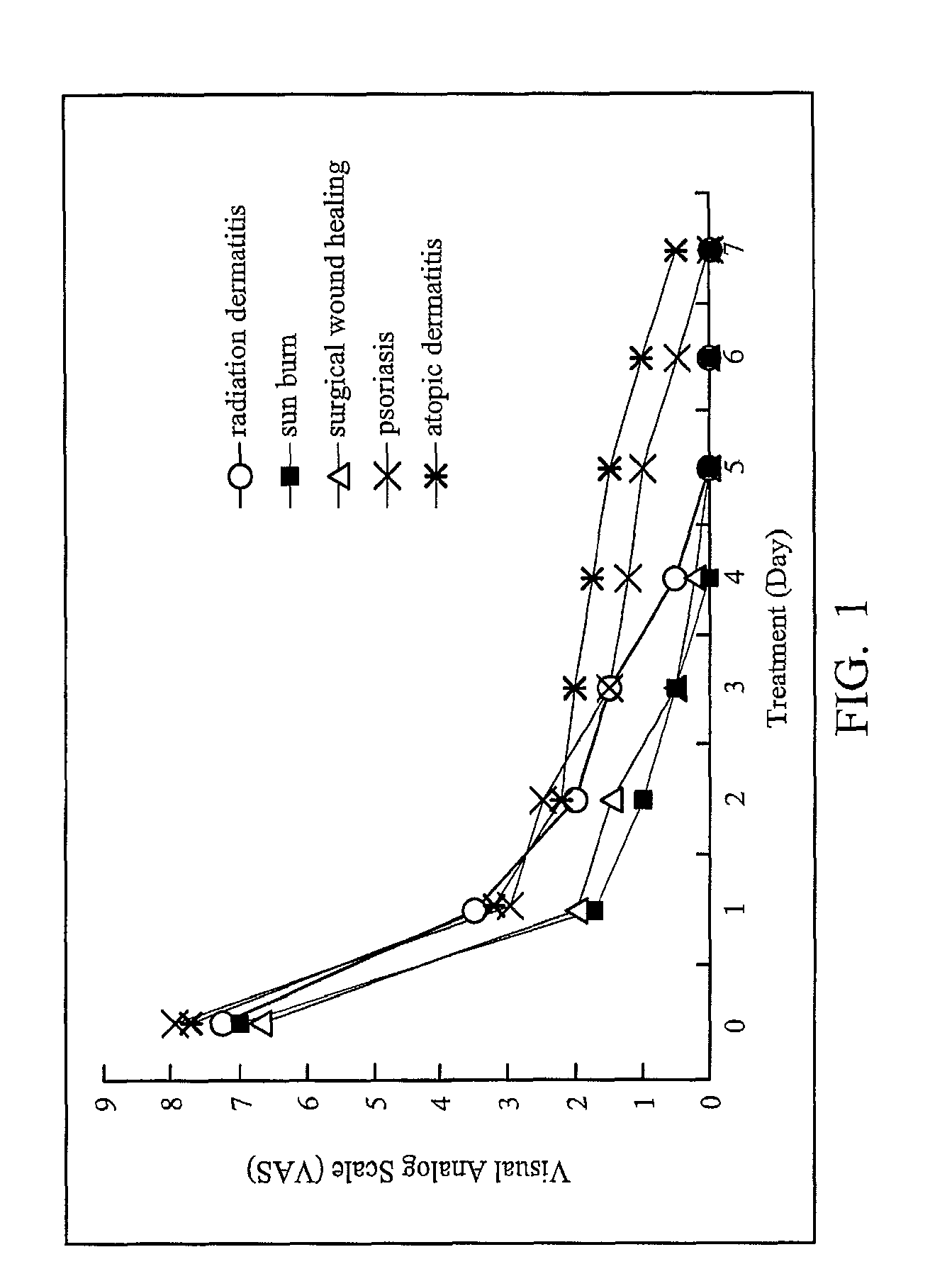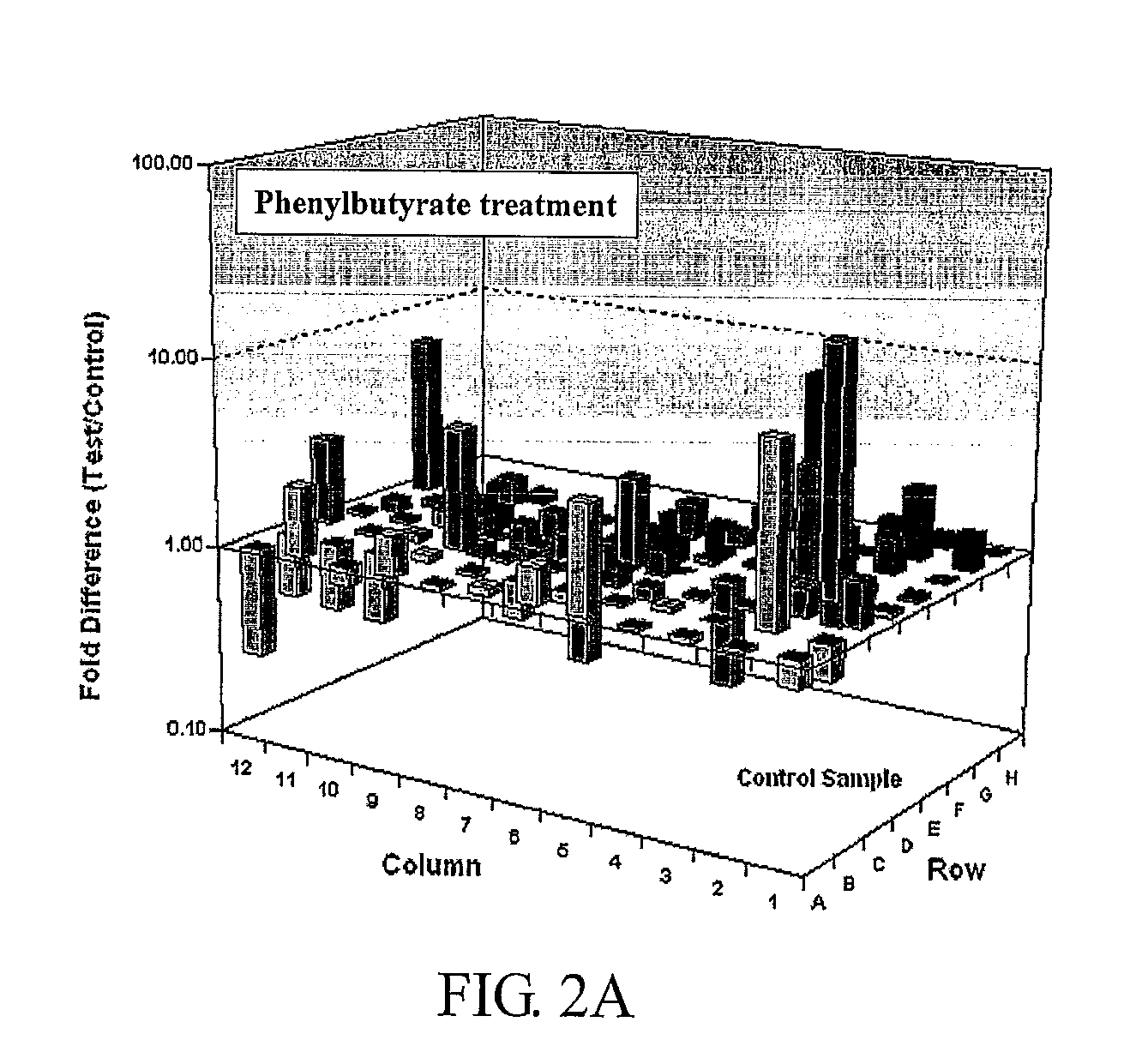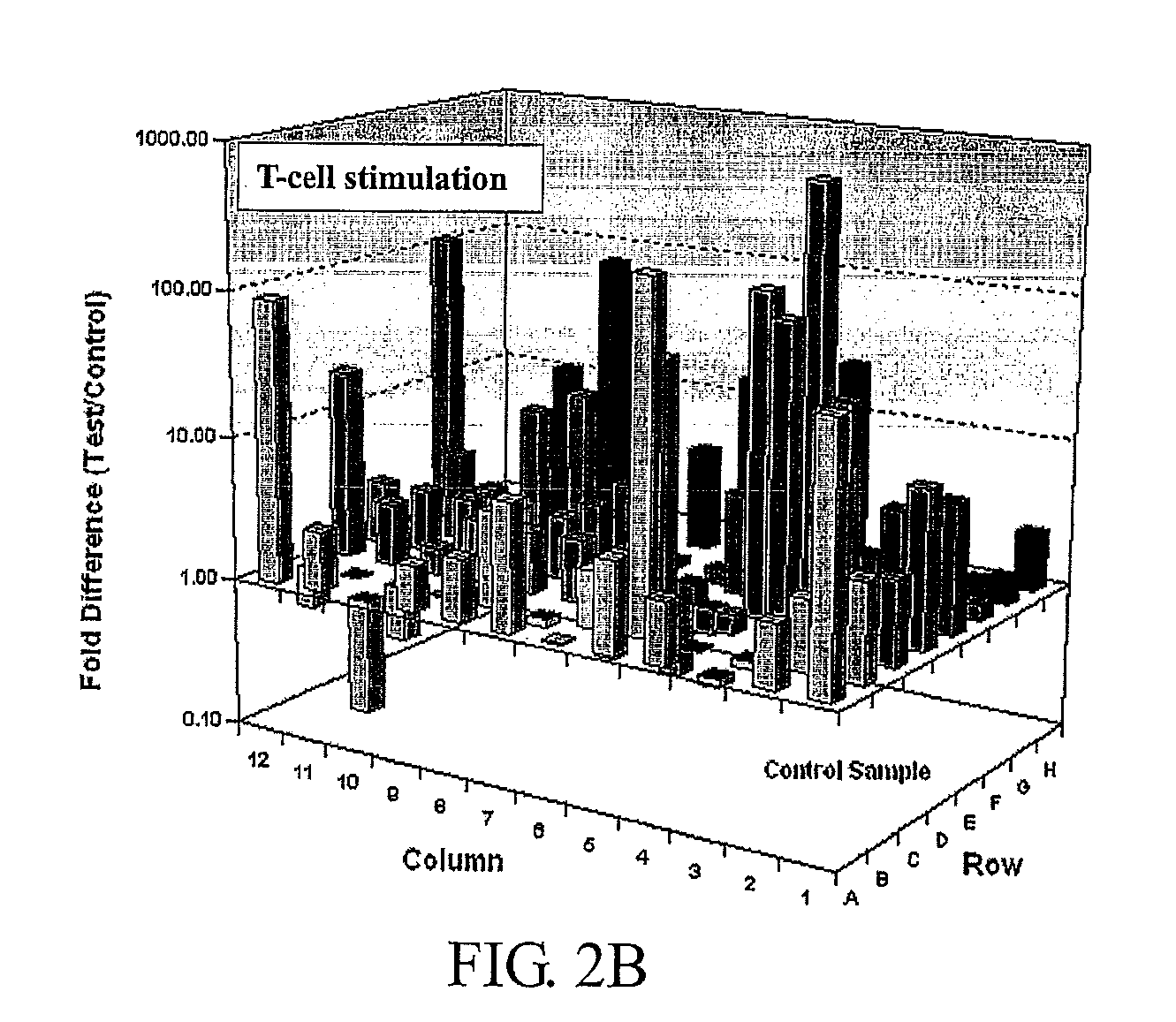Method for ameliorating pruritus
a technology for pruritus and adipose tissue, applied in the field of pruritus amelioration, can solve the problems of irritability, inflammation, wound formation and possibly infection, and may be quite debilitating for some patients
- Summary
- Abstract
- Description
- Claims
- Application Information
AI Technical Summary
Problems solved by technology
Method used
Image
Examples
example
Example 1
Various Topical Compositions-oleaginous Ointment, Cream and Gel
[0027]A. Preparation of an Oleaginous Ointment of Phenylbutyrate:
[0028]65 g of white petrolatum (Riedel-de Haen), 15 g of cetyl alcohol (Riedel-de Haen), 260 g of soft paraffin (Merck), 155 g of liquid paraffin (Merck), and 5 g of 4-phenylbutyrate (Merck) were mixed in a beaker and heated at 70° C. to form a paste. The paste was stirred at 400 rpm for 1 hour, and then cooled at room temperature.
[0029]B. Preparation of Cream of Phenylbutyrate:
[0030]Part I: 70 g of Tefose 63™, 20 g of Superpolystate™, 10 g of Coster 5000™, 15 g of Myriyol 318™, 15 g of Coster 5088™, and 15 g of GMS SE™ (all commercially available from a local supplier) were mixed in a beaker and heated at 70° C.
[0031]Part II: 5.739 g of sodium 4-phenylbutyrate (Triple Crown America, Inc.), 0.125 g of methylparaben (Merck), 0.075 g of propylparaben (Merck), and 149.061 g of deionized water were mixed in a beaker and heated at 70° C.
[0032]Part II wa...
example 2
Topical Phenylbutyric Acid to the Affected Skin of Different Disorders to Treat Pruritus
[0039]A 2.5% phenylbutyric acid gel was applied to the affected skin six times per day for 1 week. There were four patients in each group, who completed a daily itch diary in which they graded the severity of their pruritus on a continuous scale from 0 (no pruritus) to 10 (the worse pruritus imaginable) using a visual analog scale (VAS) with points anchored with facial expressions to guide their selection (Mayo M J, et al. Hepatology 45:666-74, 2007).
[0040]Referring to FIG. 1, the 2.5% phenylbutyric acid gel rapidly relieved the itchy sensation within 2-10 minutes, and improved the mean VASs from 7.25, 7, 6.75, 8, and 7.75 to 2, 1, 1.5, 2.5 and 2.25 in 1-2 days in patients with radiation-induced dermatitis, sun burn, surgical wound healing, psoriasis, or atopic dermatitis, respectively. The pruritus-related symptoms of erythema, urticaria, swelling, and desqumation also subsided simultaneously.
example 3
Suppression of Multiple Itching-associated Molecular Mediators by 4-phenylbutyrate Sodium
[0041]Itching is the most important problem in many allergic and inflammatory skin diseases. The skin barrier (stratum corneum) is a major factor for determining the nature of immune responses to allergens presented at the skin surface.
[0042]Abnormalities in skin barrier function may result in Th1, Th2 and Th3 responses to infectious agents, chemicals, or protein antigens, which induce several cytokines and molecular mediators in the skin lesion to cause symptoms and signs of pruritus. The cytokine profile subsequently produced depends upon the type of allergen stimulation. Distinct subsets of helper T cell activation have been identified by virtue of cytokines that they produce. Activated Th1 cells produce IFN-gamma and IL-2. Th1 cells regulate delayed type hypersensitivity reactions. Th1 responses are promoted by local release of the IL-12 superfamily of cytokines. These responses are further ...
PUM
| Property | Measurement | Unit |
|---|---|---|
| total weight | aaaaa | aaaaa |
| temperature | aaaaa | aaaaa |
| temperature | aaaaa | aaaaa |
Abstract
Description
Claims
Application Information
 Login to View More
Login to View More - R&D
- Intellectual Property
- Life Sciences
- Materials
- Tech Scout
- Unparalleled Data Quality
- Higher Quality Content
- 60% Fewer Hallucinations
Browse by: Latest US Patents, China's latest patents, Technical Efficacy Thesaurus, Application Domain, Technology Topic, Popular Technical Reports.
© 2025 PatSnap. All rights reserved.Legal|Privacy policy|Modern Slavery Act Transparency Statement|Sitemap|About US| Contact US: help@patsnap.com



